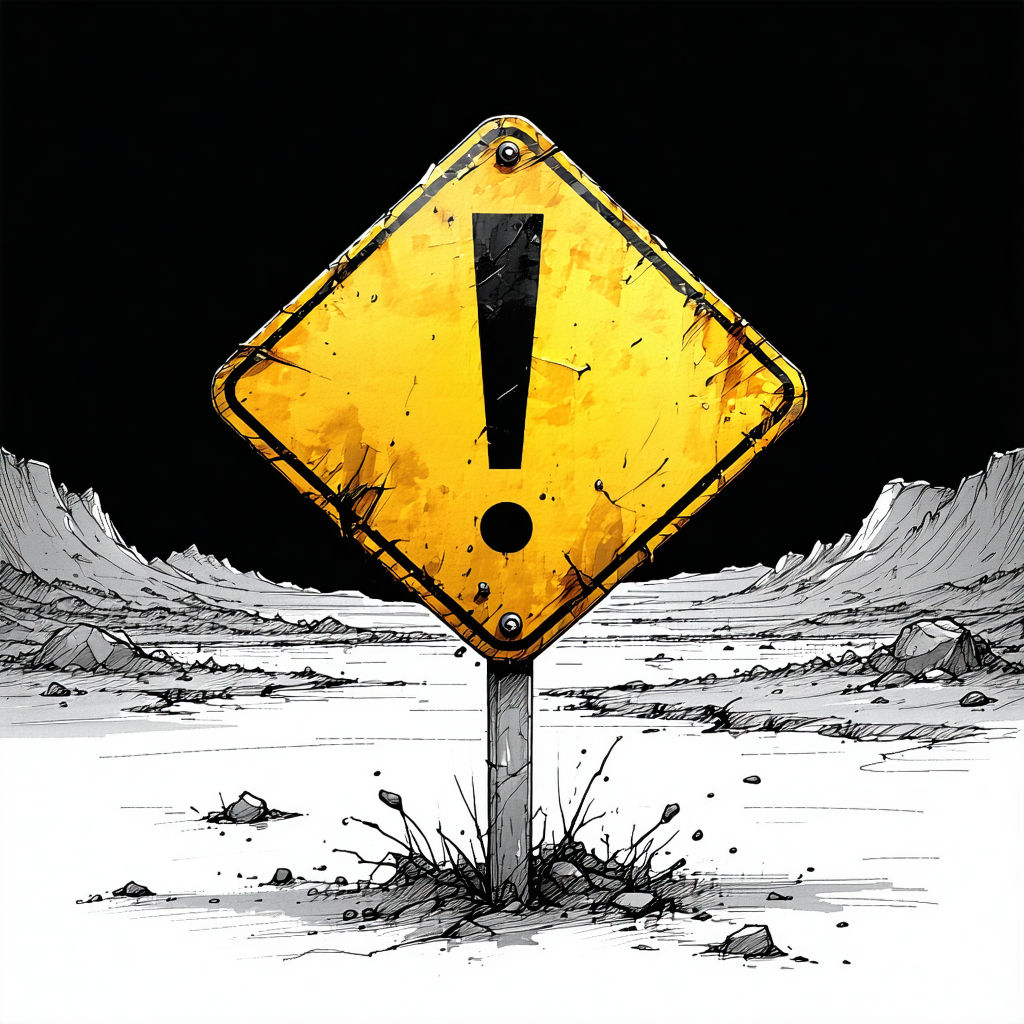How to Identify a Tar Pit in Your Startup Early

What if your ‘brilliant’ startup idea is actually a tar pit, silently dragging you toward failure without you even realizing it?
Table of Contents
- Introduction
- What is a Tar Pit in a Startup
- Identifying Tar Pits in Your Startup
- Common Signs of a Tar Pit
- How to Avoid Falling into a Tar Pit
- Recovering from a Tar Pit
- Conclusion
- Key Takeaways
- FAQ
Introduction
Startups often face challenges that can stall progress and drain resources. These obstacles, metaphorically referred to as "tar pits," can trap teams in unproductive cycles. Recognizing these early is essential to maintaining momentum and achieving goals. This article explores the concept of startup tar pits, helping founders and teams identify warning signs before they derail growth.

Here is the generated content:
What is a Tar Pit in a Startup
A tar pit in a startup refers to a situation where the company gets stuck on a problem or an idea that seems promising at first but eventually turns out to be a huge waste of time and resources. It's a concept that was first introduced by Paul Graham, the co-founder of Y Combinator, in one of his essays. In essence, a tar pit is a problem that is so complex or so appealing that it consumes a significant amount of the company's time and energy without providing any substantial returns. It's a situation where the startup gets so deeply invested in solving a particular problem that it becomes difficult to pull out, even when it's clear that it's not going anywhere.
For instance, a startup might decide to build a complex AI model that can solve a particular problem in a unique way. However, as they dive deeper into the project, they might find that the problem is much more complex than they anticipated, and the solution requires a lot more resources and time than they initially thought. In such a scenario, the startup might find itself stuck in a tar pit, where it's unable to make significant progress but is also unable to pull out because of the sunk costs and the potential promise of the idea.
Here is a video that further explains the concept of tar pits in startups:
This video provides a detailed explanation of tar pit ideas and how they can affect startups.
Identifying Tar Pits in Your Startup
Identifying tar pits in your startup is crucial for maintaining momentum and avoiding the pitfalls that can hinder your progress. It's not just about identifying the problem; it's about knowing how to navigate through these challenges to come out stronger on the other side. In this section, we'll delve into the specifics of recognizing tar pits and how to avoid or recover from them.
Common Indicators of Tar Pits
A tar pit in your startup can manifest in various ways. It could be a project that's taking much longer than anticipated, a team member who's not pulling their weight, or a product feature that's not resonating with your target market. These are just a few examples, but the common thread is that they all have the potential to drain resources and morale if left unaddressed.
The Hidden Dangers of Tar Pits
Tar pits can be treacherous because they often start off as something that seems manageable or even a good idea. It's only after you're deep in that you realize the complexity or the scope of the problem. This is why it's so important to keep a level head and not get too attached to any one idea or project. It's okay to cut your losses and move on if something isn't working out as planned.
How to Stay Afloat
Staying afloat in the face of a tar pit requires a combination of strategic thinking and flexibility. It involves being able to adapt quickly to changing circumstances and knowing when to hold on and when to let go. This can be a difficult balance to strike, but it's one that's necessary for the survival of your startup.
Common Signs of a Tar Pit
A tar pit in your startup can be challenging to identify, especially when you're deep into the development process. However, there are certain signs you should look out for to avoid getting stuck. These include:
- Lack of clear objectives: If your project's goals are not clearly defined, it's easy to fall into a tar pit. Uncertain objectives can lead to a never-ending cycle of development without a clear endpoint.
- Overly complex solutions: When the solution to a problem becomes too complex, it can lead to a tar pit. This complexity can stem from trying to solve too many issues at once or not fully understanding the problem.
- Infinite feature creep: Continuously adding features to your product without a clear end can be a sign of a tar pit. This can lead to an overwhelming amount of work without a clear goal in sight.
- Stagnant progress: If your project's progress is stagnating despite consistent effort, it might be a sign that you're stuck in a tar pit. This could be due to a lack of clear direction or an overabundance of features.
- High resource consumption: If your project is consuming an excessive amount of resources without significant progress, it could be a tar pit. This includes time, money, and personnel.

It's crucial to be aware of these signs and take steps to avoid or recover from a tar pit. This includes setting clear objectives, focusing on simple solutions, limiting features to those that are necessary, monitoring progress, and optimizing resource usage.
How to Avoid Falling into a Tar Pit
Prioritize Clear Goals and Boundaries
Startups often stumble into tar pits when they lose focus on their core objectives. To avoid this, define clear, measurable goals for your team. Break these goals into smaller, actionable tasks and regularly assess progress. Avoid overextending your resources by chasing every opportunity that arises. Instead, evaluate whether new ideas align with your startup’s mission and long-term vision.
Establishing boundaries is equally critical. Resist the temptation to take on projects or partnerships that stretch your team too thin. A well-defined scope keeps your team aligned and prevents unnecessary distractions.
Build a Resilient Team Culture
A cohesive team can often spot potential issues before they escalate. Foster an environment where team members feel comfortable raising concerns and sharing feedback. Encourage open communication and ensure that everyone understands their roles and responsibilities.
Invest in professional development to equip your team with the skills needed to tackle challenges effectively. A knowledgeable, adaptable team is less likely to fall into the inefficiencies that characterize a tar pit.
Maintain a Lean Approach
Overcomplicating processes or overinvesting in unproven ideas can lead to inefficiency. Adopt a lean methodology by focusing on delivering value quickly and iterating based on feedback. This approach minimizes waste and ensures that your efforts remain aligned with customer needs.
Regularly review your operations to identify bottlenecks or redundant processes. Simplify workflows where possible, and ensure that your resources are allocated efficiently.
Monitor Progress and Adjust Quickly
Establish systems to track progress and identify early warning signs of a tar pit. Use tools like project management software or key performance indicators (KPIs) to measure your startup’s health. If you notice delays, declining morale, or unclear priorities, address these issues immediately.
Be prepared to pivot if necessary. Sometimes, avoiding a tar pit means recognizing when a strategy isn’t working and having the courage to change course. Flexibility and quick decision-making are essential to staying on track.
Learn from Others
Studying the experiences of other startups can provide valuable insights. Analyze case studies or listen to industry leaders to understand common pitfalls and how they were avoided. Learning from others’ mistakes can save your startup from repeating them.
For further context on resilience and adaptability, consider watching this documentary:
Recovering from a Tar Pit
Recovering from a tar pit in your startup can be challenging, but it's not impossible. The key is to acknowledge the issue, reassess your priorities, and make necessary adjustments to get back on track.
Assessing the Damage
Before you can start recovering from a tar pit, you need to assess the damage. This involves evaluating the impact of the tar pit on your startup, including the time, resources, and money invested. Be honest with yourself, and consider the following:
Area of ImpactAssessmentTimeHow much time has been wasted on the tar pit?ResourcesWhat resources (e.g., personnel, equipment, budget) have been allocated to the tar pit?MoneyWhat is the financial cost of the tar pit?
Refocusing Your Efforts
Once you've assessed the damage, it's time to refocus your efforts. This involves:
- Re-evaluating your priorities and goals
- Identifying areas where you can cut costs and allocate resources more efficiently
- Developing a new strategy to achieve your goals
Learning from Your Mistakes
Recovering from a tar pit is not just about moving forward; it's also about learning from your mistakes. Take the time to reflect on what went wrong and how you can avoid similar situations in the future.
Moving Forward
Recovering from a tar pit requires a clear plan and a commitment to change. By assessing the damage, refocusing your efforts, and learning from your mistakes, you can get your startup back on track.
"The biggest risk is not taking any risk…" - Mark Zuckerberg
In the context of recovering from a tar pit, this quote emphasizes the importance of taking calculated risks to get back on track. By being proactive and making necessary changes, you can minimize the impact of the tar pit and move forward with renewed focus and determination.
Conclusion
In the journey of building a successful startup, it's crucial to be aware of the potential tar pits that can hinder progress. By understanding what these tar pits are, identifying common signs, and knowing how to avoid or recover from them, you'll be better equipped to navigate the challenges that come with starting a new business.
Key Takeaways
The key to avoiding tar pits in your startup lies in early identification and proactive measures.
- Stay alert: Monitor your startup's growth and progress closely.
- Assess risks: Identify potential tar pits and weigh their impact on your business.
- Prioritize: Focus on high-value tasks and delegate or eliminate non-essential ones.
- Review and adjust: Regularly review your startup's strategy and adjust as needed.
- Seek expertise: Leverage external guidance when dealing with complex issues.
FAQ
What exactly is a "tar pit" in a startup?
A "tar pit" refers to a situation where a startup becomes bogged down in complexities, inefficiencies, or distractions, hindering its progress. These can be technical, organizational, or strategic obstacles that consume resources without yielding progress.
How can I identify a tar pit in my startup?
Look for signs such as consistently missed deadlines, unclear project goals, or a lack of tangible progress despite significant effort. Regularly assess your startup's focus and priorities to spot these early.
Can a startup recover from a tar pit?
Yes, recovery is possible. It requires a clear assessment of the issues, a strategic plan to address them, and a commitment to refocusing efforts on core objectives. Engaging with mentors or industry experts can also provide valuable insights.
Are tar pits common in startups?
Yes, many startups encounter tar pits as they grow. Recognizing and addressing them promptly is crucial to maintaining momentum and achieving long-term success.